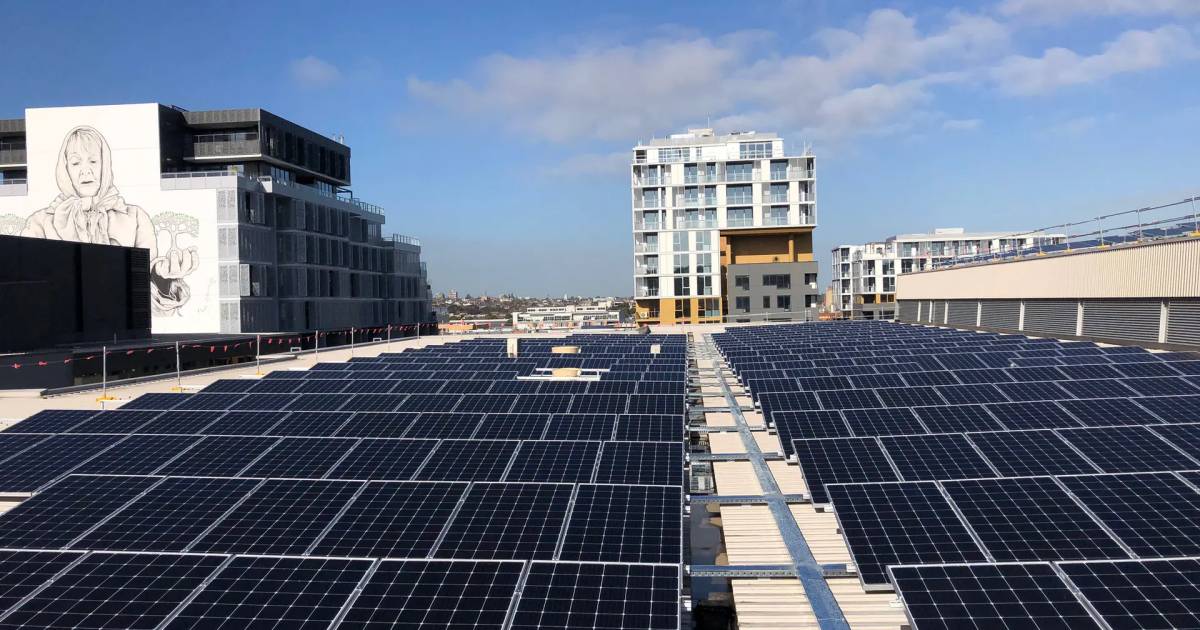
The use of solar power is continuing to help companies achieve strong NABERS environmental performance ratings for their buildings in Australia.
What Is NABERS?
NABERS stands for National Australian Built Environment Rating System. It’s a system a little like the energy star ratings you see on whitegoods and other appliances, but applies to buildings and takes into account energy, water, waste and indoor environment.
NABERS star ratings range from 1 (“making a start”) to 6 (“market-leading”). The NABERS system helps building owners measure the environmental performance and progress of their assets, and the ratings are updated annually.
The NABERS Sustainable Portfolios Index 2022 (SPI) has just been released, indicating environmental performance of the top 53 building portfolios and funds across the country. This year’s Index is the biggest yet.
“We had already seen record participation in the SPI last year,” said Carlos Flores, Director NABERS & Building Sustainability. ” So seeing a further 34.5% increase in 2022 is incredible, and a sign of how important sustainability has become to investors and the finance sector at large.”
There are 30% more shopping centre portfolios included in the SPI this year, which now includes most large shopping centre operators in Australia.
Vicinity Centres Celebrates NABERS Rating Boost
Among the companies continuing to do pretty well in the SPI is Vicinity Centres, which has a huge portfolio of 53 shopping centres. Vicinity ranked in the top 5 for NABERS Energy, and ranked top 3 for NABERS Water for 2021. On the energy side of things, Vicinity’s NABERS rating increased from 4.4 stars to 4.6 stars.
Helping support this score is solar energy. The company has been rolling out solar panels to help power its shopping centres since 2018 under a $73 million program that has seen more than 80,000 solar panels installed; generating almost 40,000 MWh of clean electricity each year according to the firm. Among the more novel solar applications was an installation of Australian company ClearVue’s solar PV glass at Warwick Grove Shopping Centre in Western Australia back in 2019.
Vicinity is also ploughing significant resources into energy efficiency.
“Our Integrated Energy Strategy, which focuses on enhanced energy management including real-time energy reporting, automation and demand management, and energy efficiency including LED and HVAC upgrades, has significantly contributed to reduced energy use,” said Vicinity’s Head of Sustainability, Meredith Banks.
Solar For All Businesses Great And Small
Vicinity has set a target of achieving net zero carbon emissions by 2030 for its wholly owned retail assets. But the solar rollout isn’t just about reducing emissions in an effort to reach this target, attracting investors or about NABERS stars street cred – it’s also going to save the company a shedload of cash on energy costs.
Australian businesses large and small with suitable building rooftops can reap the many benefits from installing solar panels – in fact, commercial solar for small businesses can achieve simple payback within just a few years. These days, if a company can afford to pay its power bills, then it can afford to go solar.

 RSS - Posts
RSS - Posts



Speak Your Mind